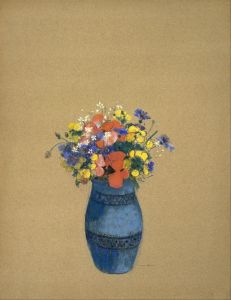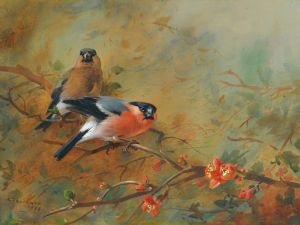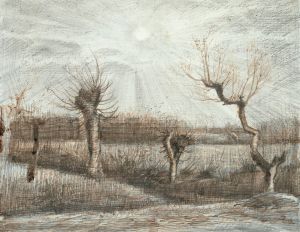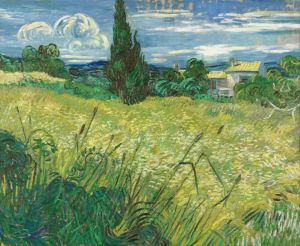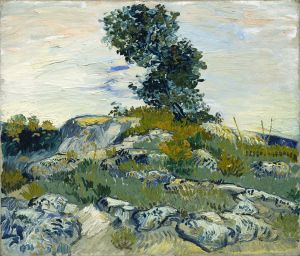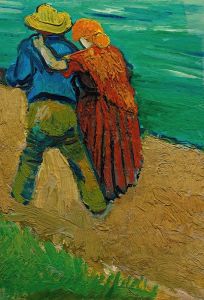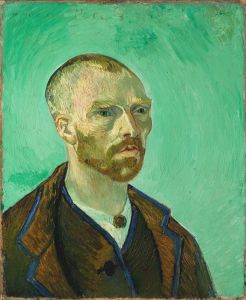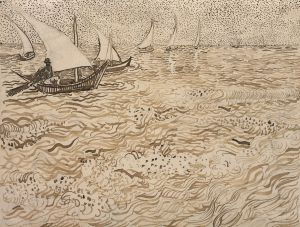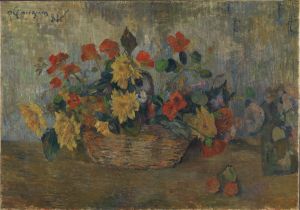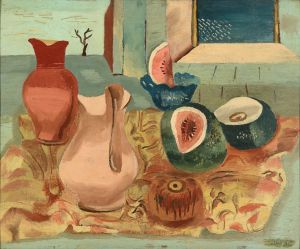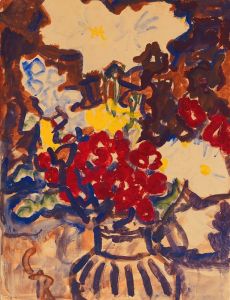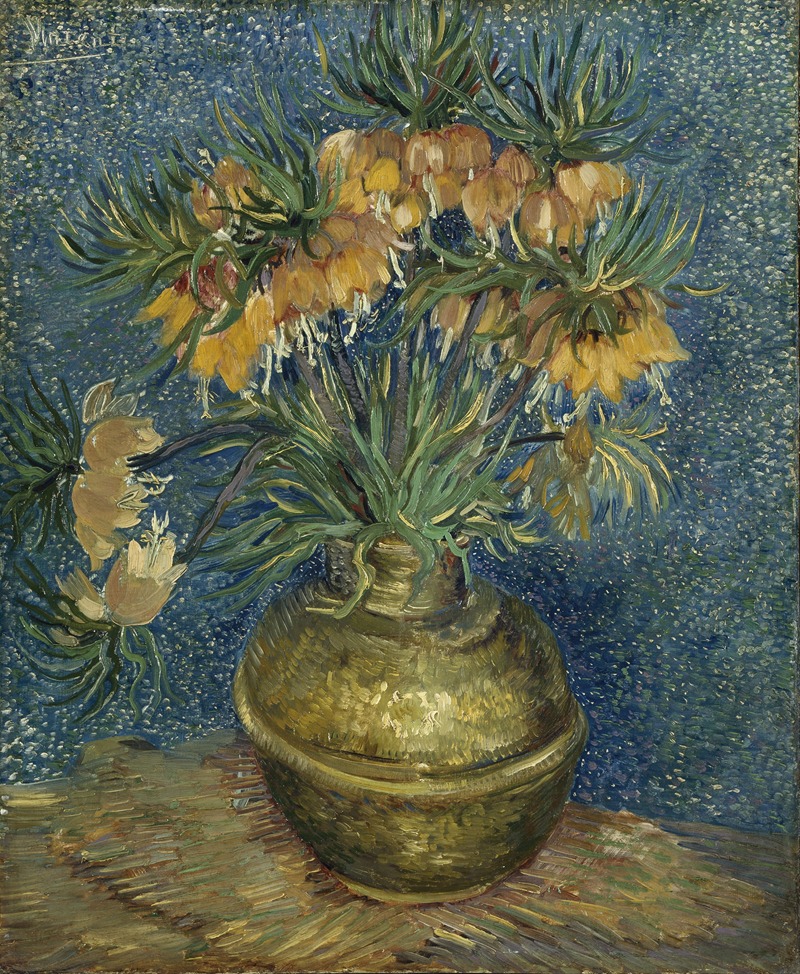
Imperial Fritillaries in a Copper Vase
A hand-painted replica of Vincent van Gogh’s masterpiece Imperial Fritillaries in a Copper Vase, meticulously crafted by professional artists to capture the true essence of the original. Each piece is created with museum-quality canvas and rare mineral pigments, carefully painted by experienced artists with delicate brushstrokes and rich, layered colors to perfectly recreate the texture of the original artwork. Unlike machine-printed reproductions, this hand-painted version brings the painting to life, infused with the artist’s emotions and skill in every stroke. Whether for personal collection or home decoration, it instantly elevates the artistic atmosphere of any space.
Imperial Fritillaries in a Copper Vase is a still-life painting created by the Dutch Post-Impressionist artist Vincent van Gogh in 1887. The artwork depicts a bouquet of imperial fritillaries, also known as crown imperials, arranged in a copper vase. This painting is notable for its vibrant use of color and expressive brushwork, which are hallmarks of van Gogh's style during this period.
Van Gogh painted this work while living in Paris, where he resided from 1886 to 1888. His time in Paris marked a significant transformation in his artistic approach, as he was exposed to the works of Impressionist and Neo-Impressionist painters. This exposure influenced his use of brighter colors and more dynamic compositions, as seen in Imperial Fritillaries in a Copper Vase. The painting reflects van Gogh's growing interest in experimenting with color contrasts and the emotional impact of color.
The imperial fritillaries in the painting are rendered in warm orange and yellow tones, standing out against a background of cooler hues. The copper vase, with its reflective surface, adds depth and texture to the composition. Van Gogh's brushstrokes are bold and energetic, giving the flowers a sense of vitality and movement. The choice of flowers and the arrangement suggest van Gogh's fascination with nature and his desire to capture its beauty in a way that transcended mere representation.
This painting is part of a series of still lifes that van Gogh created during his Paris years. These works often featured flowers, a subject he returned to frequently as a means of exploring color and form. Still lifes also allowed him to work indoors during the colder months and provided an opportunity to experiment with different techniques.
Today, Imperial Fritillaries in a Copper Vase is housed in the Musée d'Orsay in Paris, France. The museum holds an extensive collection of 19th-century art, including several works by van Gogh. This painting is considered an important example of his Paris period and a precursor to the more intense and expressive works he would create later in Arles, Saint-Rémy, and Auvers-sur-Oise.
Van Gogh's still lifes, including this one, are celebrated for their ability to convey emotion and energy through the use of color and texture. Imperial Fritillaries in a Copper Vase exemplifies his innovative approach to painting and his enduring fascination with the natural world.






